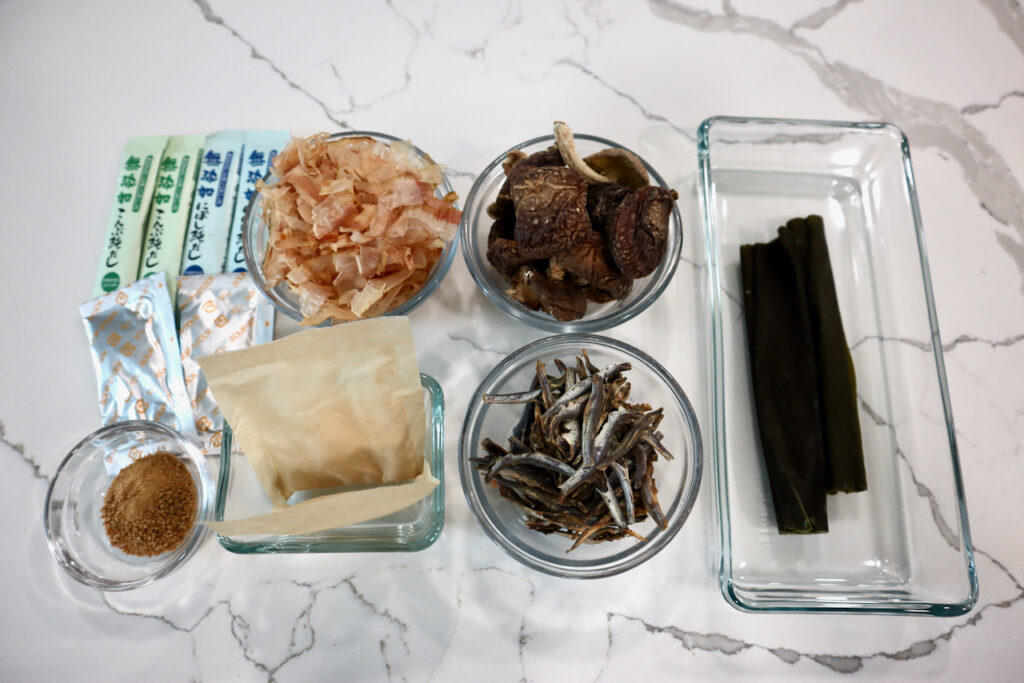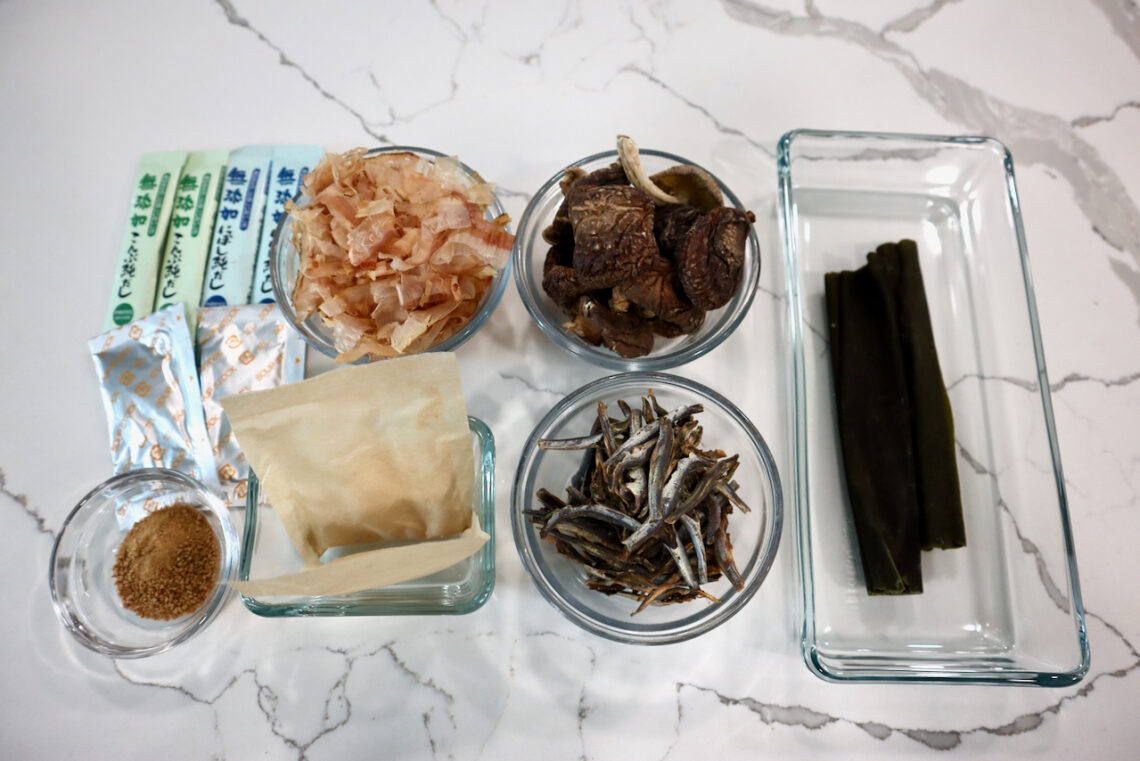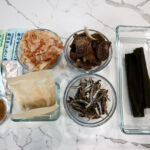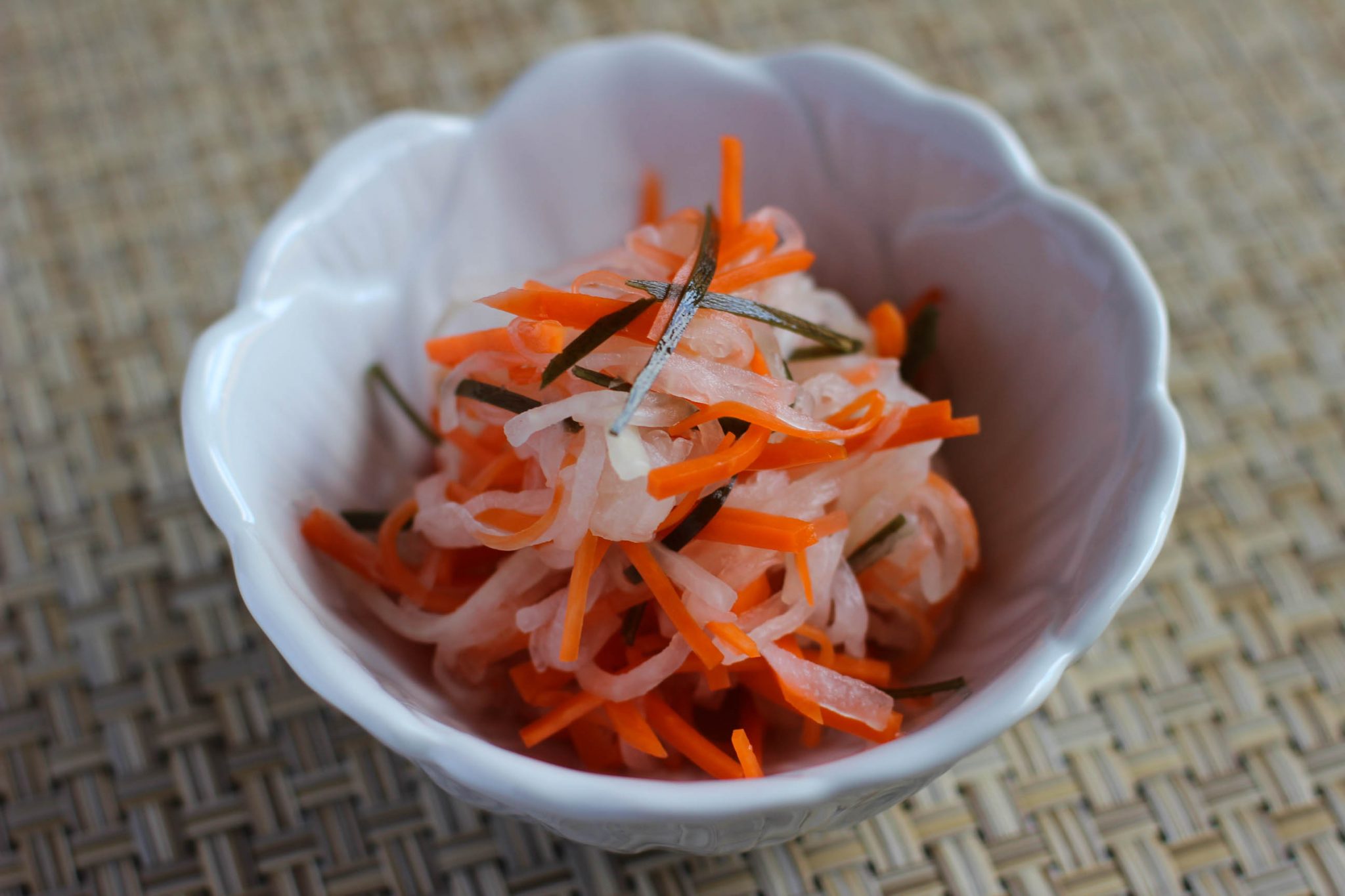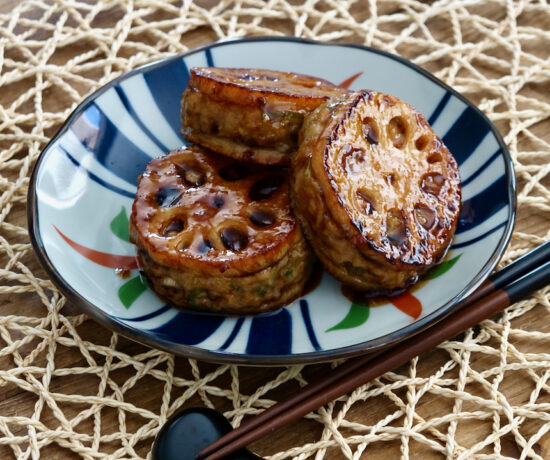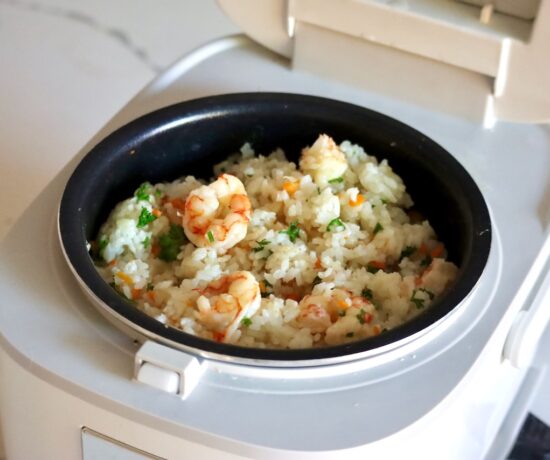Dashi, broth of fish or vegetables, is an important component when cooking Japanese food. Dashi is the base flavor of a lot of Japanese dishes, and it is hard to omit. Whether you make it from scratch or use more convenient instant granules or packets, Dashi will be needed if you’re cooking Japanese food. We’ll show you how to make 4 kinds of Dashi here, and they will be used in different dishes.
Dashi ingredients are found at Japanese or Asian markets, but you can also buy them online today. Check out our Dashi recommendations on Amazon.com (#CommissionsEarned)
Katsuo (dried bonito flakes) Dashi
Katsuo Dashi is probably the most common and versatile kind of Dashi of all the Japanese broths. If you don’t know which Dashi to make, Katsuo Dashi may be the most flexible one for different kinds of dishes. It has plenty of fish Umami (savory flavor) and becomes a base layer of flavor before seasoning it with Soy Sauce, Miso, salt, etc. When cooking meat and vegetables with Katsuo Dashi, it really doesn’t taste too strong. It stands in the background and gives dishes more complex tastes.
How to Make Dashi
*Links may contain ad. #CommissionsEarned
Instructions
- Heat water in a pot at medium high heat, and add dried bonito flakes. Let boil for a couple of minutes, then strain. Discard bonito flakes.
Video
Katsuo Dashi is often used in Miso Soup, Nimono (cooked meat and vegetables in broth), Dashimaki rolled egg, and many other dishes. Here, we made a very simple but tasty Imo no Nikkorogashi (boiled potato in seasoned broth) with Katsuo Dashi.
Imo no Nikkorogashi
Kombu (dried sea kelp) Dashi
Kombu Dashi is a milder broth and has a more subtle flavor. It doesn’t use fish so it is a great option for vegetarian dishes. You don’t need very much Kombu to make Kombu Dashi because the Kombu expands. Kombu Dashi is good by itself but works especially well when mixing with other Umami packed ingredients such as meat and seafood. Adding Katsuo bonito flakes to Kombu Dashi makes a richer Dashi, and that is called Ichiban Dashi. Ichiban Dashi is often used to make soups that need a more pronounced Dashi flavor.
Kombu Dashi is usually used in Nabemono, and hot pot dishes, such as Mizutaki and Yudofu.
Niboshi (dried sardine) Dashi
Niboshi Dashi is a broth made with small dried sardines. It may have a stronger fish aroma and taste than Katsuo Dashi. Niboshi Dashi is good for dishes that need a little more kick of fish flavor. It is important to remove the head and innards (guts) from the dried sardines before cooking so that the broth doesn’t get a bitter taste or undesirable fishy smell.
Niboshi Dashi is great for simple Miso Soup to enjoy the soup itself. We made Tofu and Wakame seaweed Miso Soup in the video. Ordinary Miso Soup turned into an upgraded soup by using Niboshi Dashi and a little Katsuo dried bonito flakes.
Shiitake Mushroom Dashi
Shiitake mushroom Dashi is the water in which dried Shiitake mushrooms are rehydrated. This very distinctive mushroom flavored Dashi is not for everything because the taste is quite strong. It’s often used when cooking vegetables or together with the rehydrated Shiitake mushrooms to enhance the mushroom flavor even more.
Shiitake mushroom Dashi is great for cooking vegetable Nimono (cooked meat and vegetable in broth), Mentsuyu noodle sauce, and Takikomi Gohan seasoned rice.
Instant Dashi
